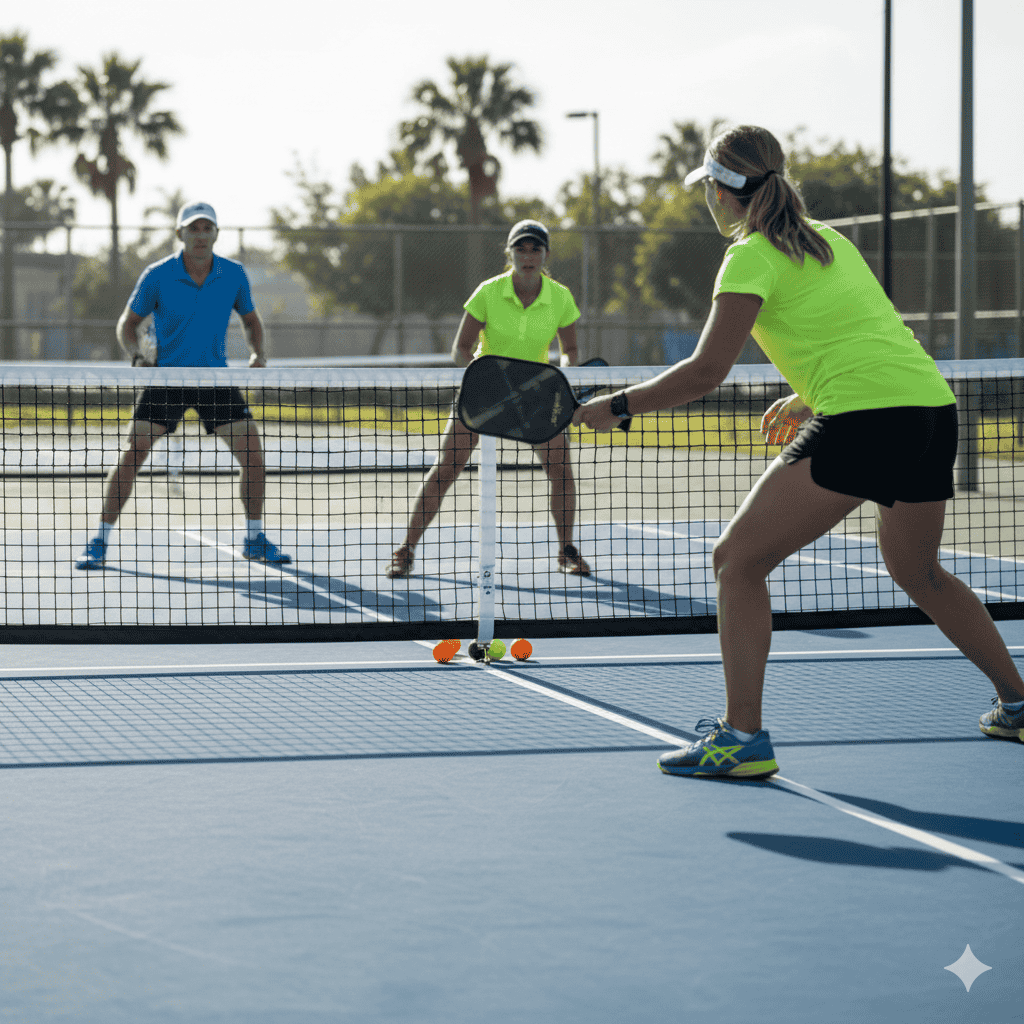Doubles Rules Explained in Pickleball
Pickleball Doubles: Rules That Shape Teamwork, Strategy, and Competitive Spirit
In the fast-paced, high-energy world of Pickleball, doubles matches resemble a perfectly coordinated duet—where cooperation, timing, and shared intelligence shine. The rules serve as the guiding framework, ensuring fairness while allowing both players to weave skill and passion into every rally.
I. Serving Rules: Setting the Stage for Each Rally
Every point in doubles begins with a serve, and Pickleball lays out clear requirements to preserve structure and fairness.
The server must stand behind the baseline and inside the designated service zone. Unlike in singles, the target service area in doubles is more narrowly defined, requiring the ball to travel crosscourt and land inside the opponent’s corresponding box.
This precision demands good control—players must consider pace, direction, and even spin.
A sidespin serve may cause the ball to skid sharply after bouncing, throwing off the receiver’s timing. A deeper, higher serve can push opponents back and create offensive opportunities for the serving team.
Meanwhile, the server’s partner must be positioned correctly, typically on the opposite side of the court and outside the service box, so as not to interfere. This positioning allows the pair to smoothly transition into offensive or defensive formations as soon as the rally begins.
II. Hitting Rules: Where Technique Meets Tactical Decision-Making
1. Alternating Shots
Doubles requires strict adherence to shot order—teammates must alternate hits throughout the rally.
This rule ensures fairness and tests coordination, awareness, and communication.
During fast exchanges, one player must instantly retreat or move aside after hitting the ball so their partner can prepare for the next shot. A misjudgment of who should hit next or a hesitation can lead to faults and lost points.
2. Shot Selection and Positioning
Players can hit the ball from anywhere on their side of the court, but only after it bounces once.
This puts pressure on quick decision-making: players must assess the ball’s height, speed, and placement in a split second before selecting the most effective response.
Different areas call for different techniques:
• At the net: quick volleys, fast flicks, or soft drops can pressure opponents and open scoring opportunities.
• From the baseline: deep drives, topspin groundstrokes, or high defensive lobs help control tempo and regain court balance.
Good doubles play requires constant coverage—if one player steps forward to volley, the partner must fill the open space behind. If a baseline player drives aggressively, the net player should be prepared to intercept the opponent’s return.
III. Scoring Rules: Measuring Progress and Shaping Momentum
Pickleball doubles use the same scoring system as singles:
Only the serving team can score, and a game is typically played to 11 points, requiring a 2-point lead to win.
Because two teammates share each point, momentum in doubles is more emotionally charged. A single rally can shift morale, influence strategy, and alter the rhythm of a game. Leading teams may choose steadier, safer tactics, while trailing teams often need bold plays—varying pace, adjusting positioning, or taking calculated risks to recover lost ground.
IV. Non-Volley Zone (Kitchen) Rules: Ensuring Balance and Fair Play
The non-volley zone—extending 7 feet from each side of the net—is central to Pickleball’s identity.
When a ball is in this zone, players cannot volley it while standing inside or touching the zone. This rule restricts overly aggressive net play and keeps rallies strategic rather than one-dimensional.
If a ball drops into the NVZ, players must either let it bounce or execute a controlled soft shot, allowing themselves time to retreat or reposition.
When the ball is outside the zone, however, players may rush forward and use volleys or overheads to pressure opponents. Smart teams constantly adjust their distance from the NVZ, using its rules to shape offensive and defensive tactics.
V. Doubles Tactics & Team Coordination: The Heart of Successful Play
1. Strategic Positioning
Effective doubles teams choose formations based on game tempo and opponent behavior.
Front-and-Back Formation:
• Net player: manages volleys, blocks, and fast exchanges.
• Baseline player: controls depth, sets up attacks, and covers lobs.
This formation excels for counterattacks or aggressive setups, allowing the team to dominate both the net and backcourt.
Parallel Formation:
Both players stand near the baseline, ideal for defending against aggressive opponents.
This alignment widens coverage, minimizes gaps, and gives the team more time to respond to powerful drives.
2. Communication & Synergy
Communication is the backbone of doubles success.
Teammates must constantly exchange information—through gestures, signals, quick verbal cues, or even simple eye contact.
Before serving, partners might indicate preferred locations or strategies. During rallies, one player may call out the ball’s direction, warn about opponents’ shifts, or signal a formation change.
When opponents dominate the net or change their tactics, a strong doubles team quickly discusses adjustments—perhaps shifting towards deeper shots, targeting one opponent, or altering serve-and-return patterns.
Conclusion: The Unified Power of Rules and Teamwork
Pickleball doubles is a beautiful blend of structure and creativity.
The rules ensure fairness, but it’s the chemistry between teammates—the trust, communication, and shared strategy—that ultimately determines victory.
By understanding these rules and practicing consistently, pairs can build rhythm, confidence, and a refined sense of teamwork. Whether competing fiercely or playing for fun, doubles Pickleball offers endless excitement and a unique charm that keeps players coming back to the court.

BHI Pickleball-Custom pickleball paddle






